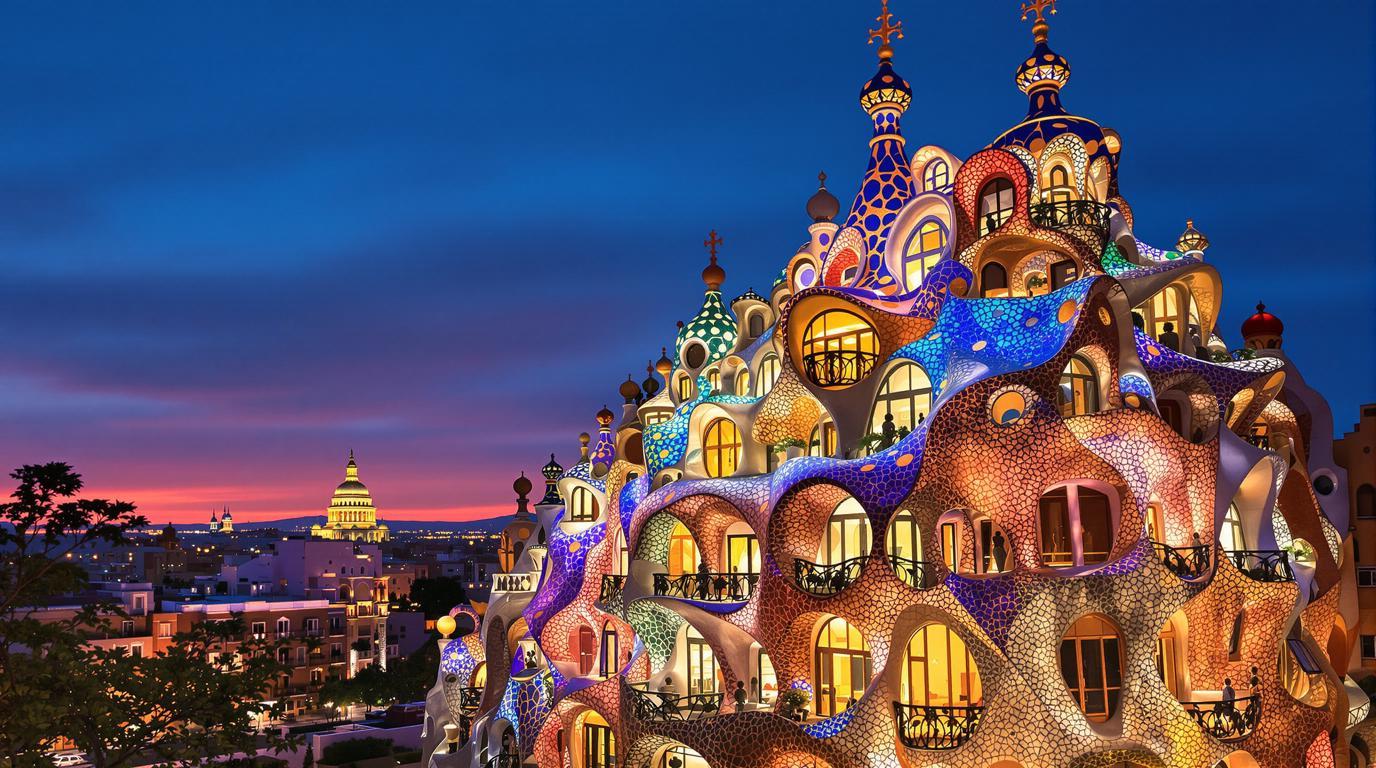Barcelona’s architectural landscape is unlike anywhere else on Earth, largely thanks to one visionary architect whose fantastical creations transform the city into an open-air museum of Modernist marvels. While millions queue to see Antoni Gaudí’s most famous masterpiece, the still-unfinished Sagrada Família, Barcelona’s Modernist treasures extend far beyond this iconic basilica.
The genius who reinvented architecture
Antoni Gaudí wasn’t just an architect; he was a revolutionary who rejected straight lines in favor of organic forms inspired by nature. His buildings don’t simply occupy space—they seem alive, as if they might start breathing at any moment. The undulating facades, skeletal balconies, and dragon-scale rooftops create an otherworldly atmosphere that makes Barcelona feel like a fairy tale come to life.
Beyond the tourist crowds: Gaudí’s hidden masterpieces
While tourists flock to Sagrada Família and Park Güell, Gaudí’s lesser-known works offer equally breathtaking experiences without the crowds. Casa Vicens, his first major commission, blends Moorish influences with his emerging style. The recently restored building showcases his early genius through intricate ceramic tilework and vibrant colors that foreshadow his later, more famous works.
Casa Batlló: where marine life meets architecture
“Entering Casa Batlló is like diving into the ocean,” explains Maria Castells, a local architecture guide. “The curved walls, blue-tinted glass, and rippling surfaces create an underwater atmosphere that captures Gaudí’s obsession with bringing nature indoors.”
The building’s façade, adorned with colorful mosaics and bone-like columns, seems to shimmer in the Mediterranean light. Inside, even the smallest details—from door handles to light fixtures—reflect Gaudí’s organic vision.
The rooftop warriors of La Pedrera
Casa Milà (nicknamed La Pedrera or “the quarry”) boasts one of Barcelona’s most surreal spaces: a rooftop populated with twisted chimney sculptures that resemble knights from another dimension. These warriors stand guard over the city, their helmets catching the golden light at sunset when the rooftop offers breathtaking views across Barcelona.
The spiritual heart of Catalonia
Sagrada Família isn’t just Gaudí’s magnum opus—it’s a symbol of Catalan identity and spiritual expression. Professor Joan Bassegoda, former president of the Real Cátedra Gaudí, noted: “The Sagrada Família isn’t merely a church; it’s a stone poem expressing the relationship between man, nature, and God.”
Beyond Gaudí: Barcelona’s Modernist movement
While Gaudí dominates conversations about Barcelona’s architecture, the city showcases other Modernist masters worth exploring. The Hospital de Sant Pau by Lluís Domènech i Montaner rivals France’s most magnificent châteaux in grandeur but remains surprisingly untouristy.
Park Güell: where architecture meets fantasy
Originally conceived as a luxury housing development (that failed commercially), Park Güell has become one of Barcelona’s most beloved spaces. Its famous serpentine bench, covered in colorful broken ceramic pieces, offers panoramic views of the city stretching to the Mediterranean. The technique—known as “trencadís”—represents Gaudí’s ingenious repurposing of waste materials into artistic mosaics.
A perfect climate for architectural exploration
Barcelona’s pleasant Mediterranean climate makes it ideal for architectural touring year-round. While summer brings crowds, spring and fall offer perfect 25°C temperatures for exploring the city’s Modernist treasures.
The underground wonders of Catalan Modernisme
Like medieval towns with hidden underground networks, Barcelona conceals architectural surprises beneath street level. The columns in the Güell Colony Crypt demonstrate how Gaudí tested architectural solutions before applying them to the Sagrada Família.
Optical illusions in stone and glass
Similar to ancient temples with their clever optical illusions, Gaudí’s buildings play with perception. Casa Batlló’s interior courtyard uses varying sizes of blue tiles—darker at the top, lighter below—creating the illusion of uniform lighting throughout the space, regardless of natural light conditions.
Barcelona’s Modernist architecture isn’t just about spectacular buildings—it’s about experiencing Gaudí’s revolutionary vision that transformed construction techniques while celebrating Catalan identity. Each curve, mosaic, and fantastical element tells the story of an architect who saw beyond convention and created a legacy that continues to inspire wonder more than a century later.
